Organizations and Organizational Environment 3 Types of

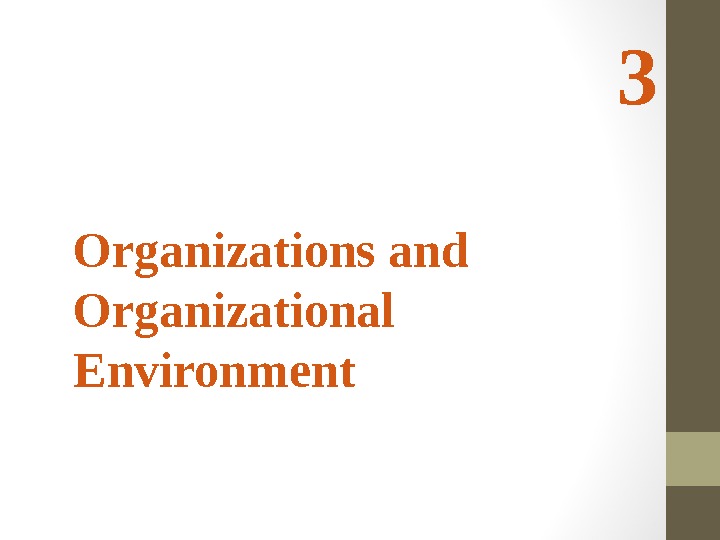
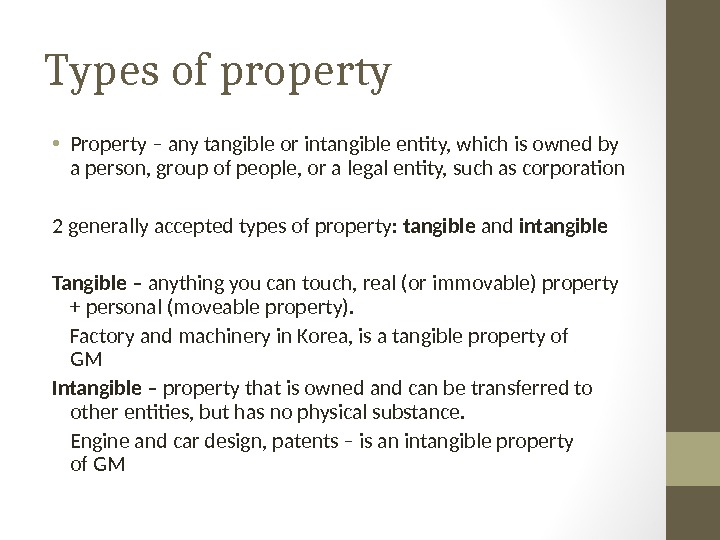
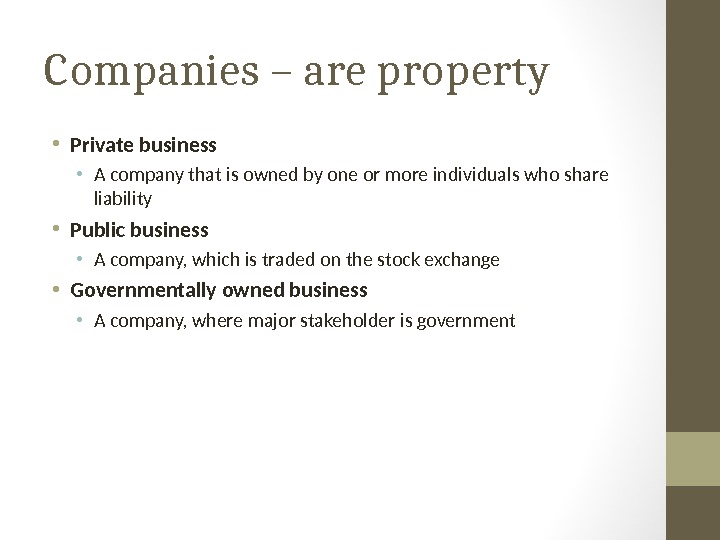
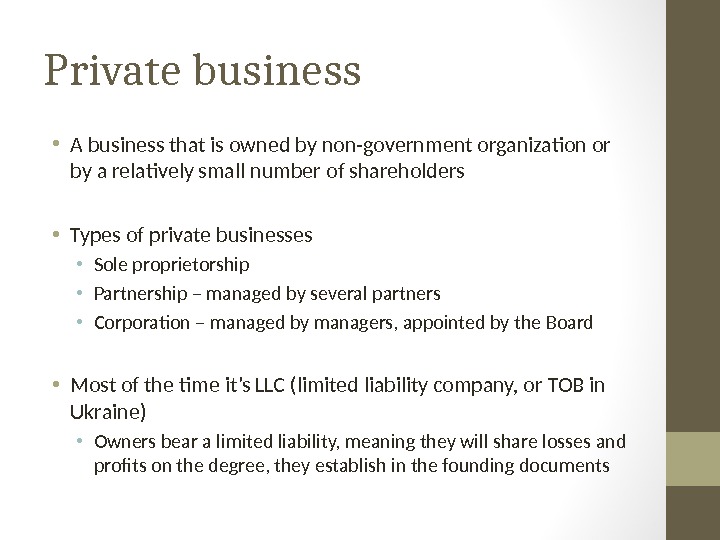
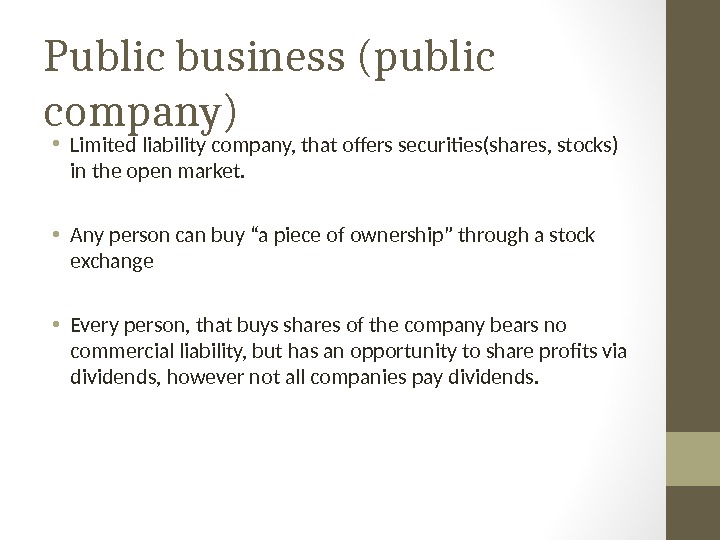
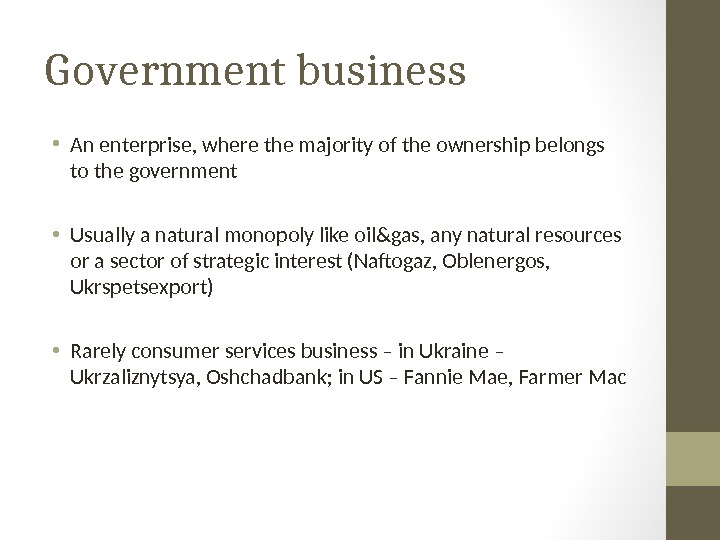
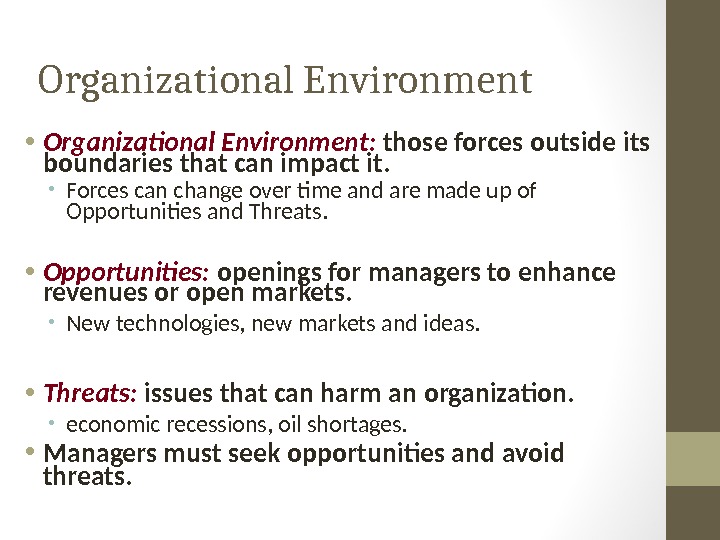
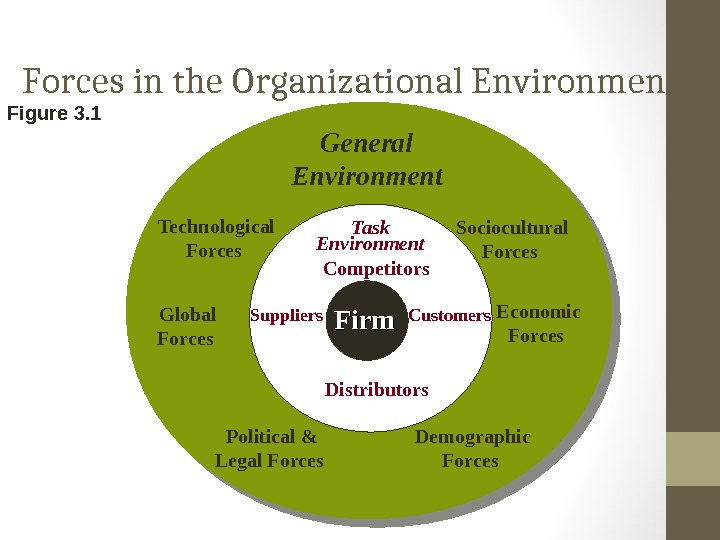
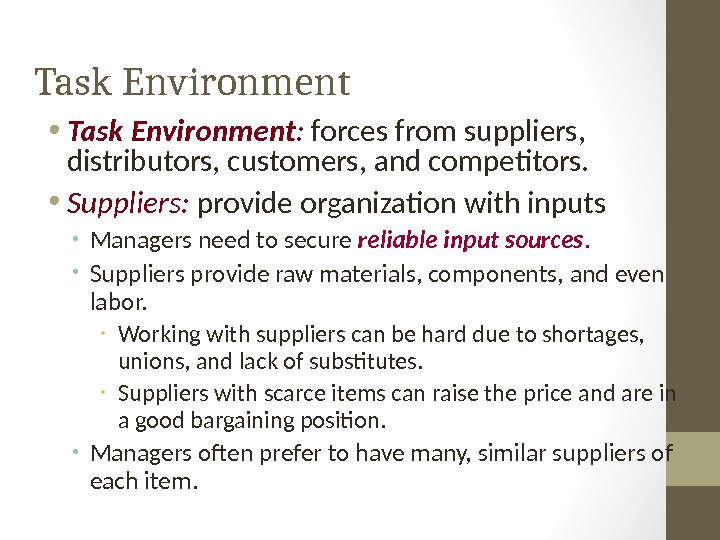
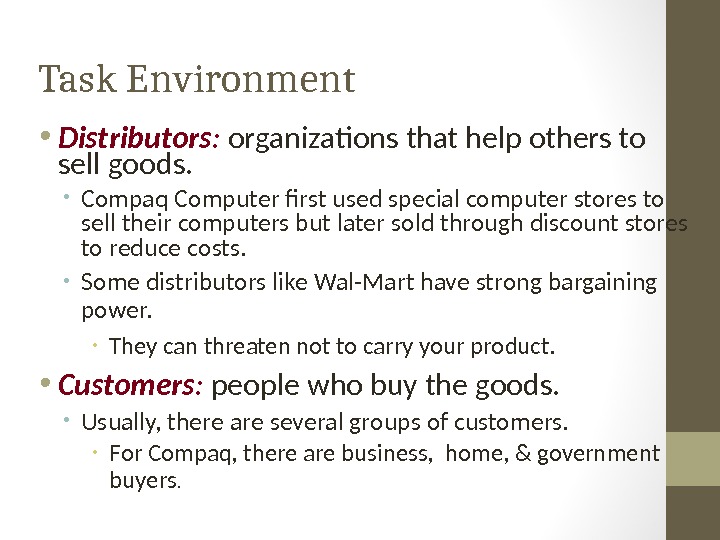

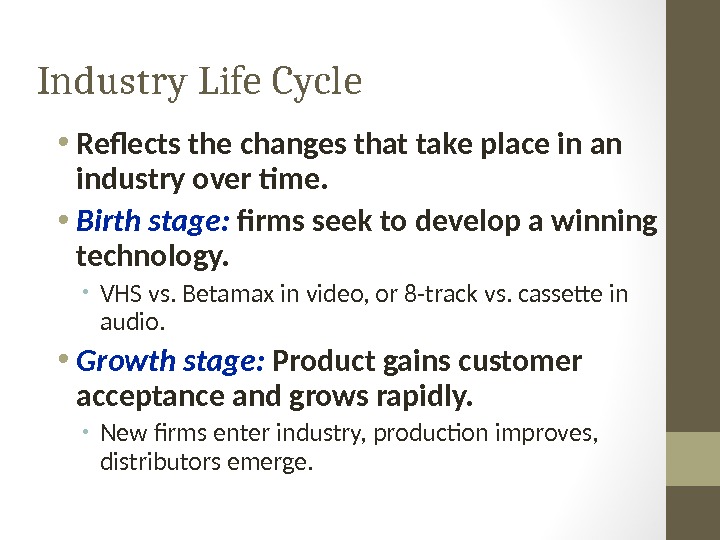
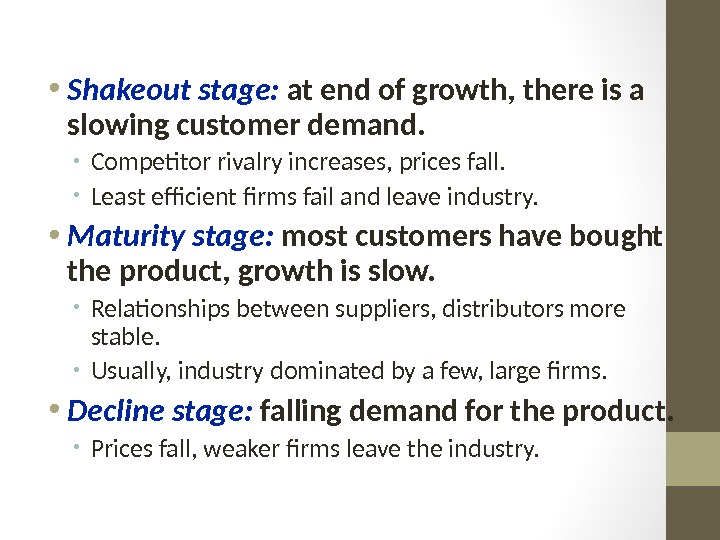
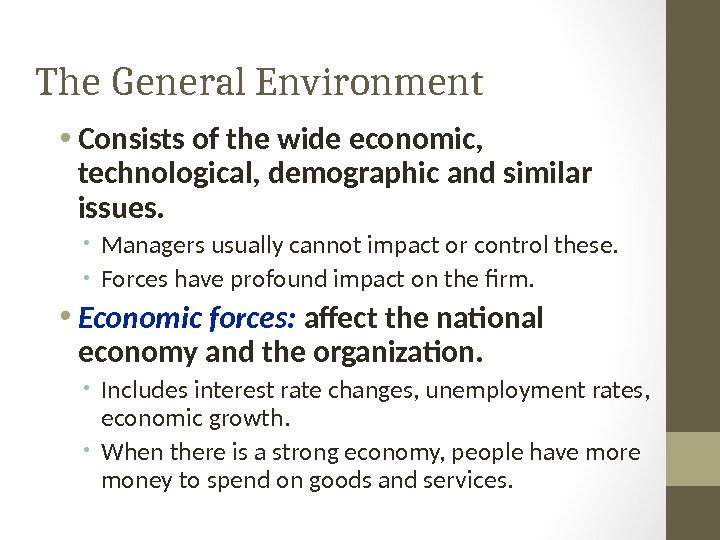
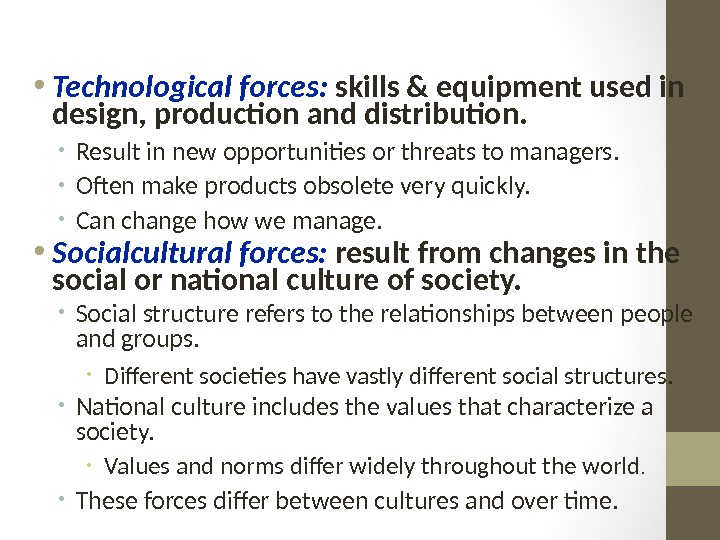
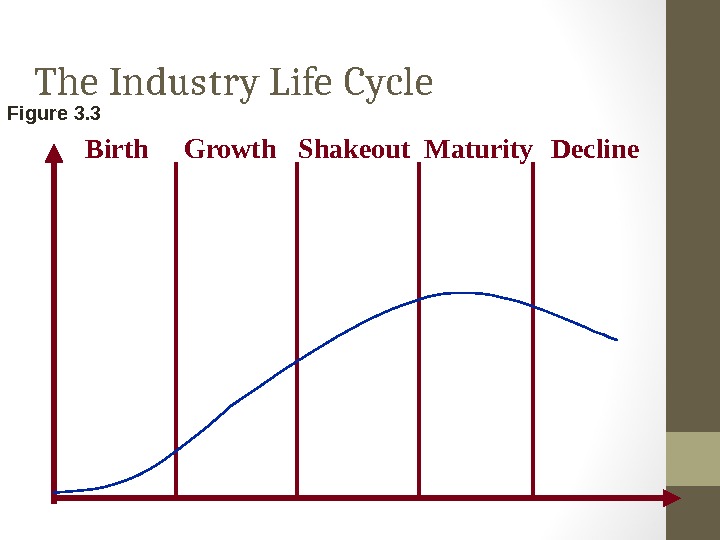
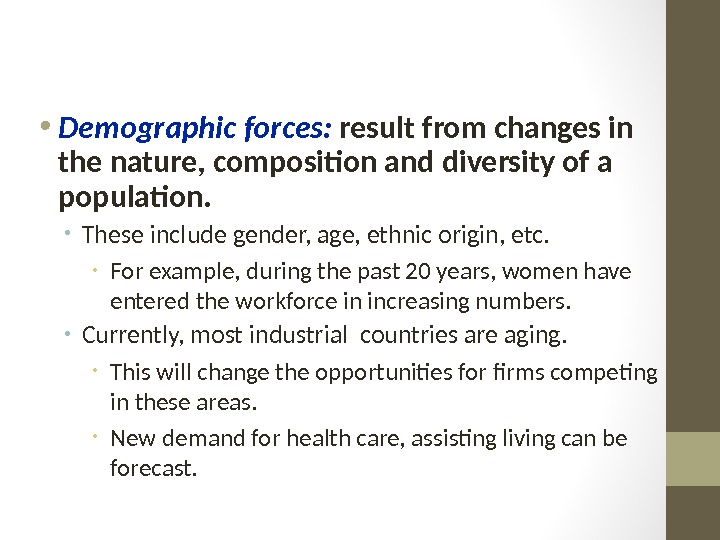
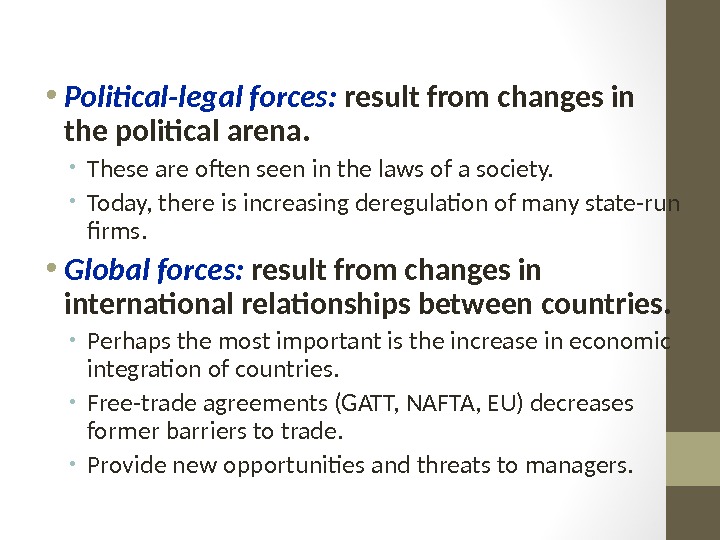
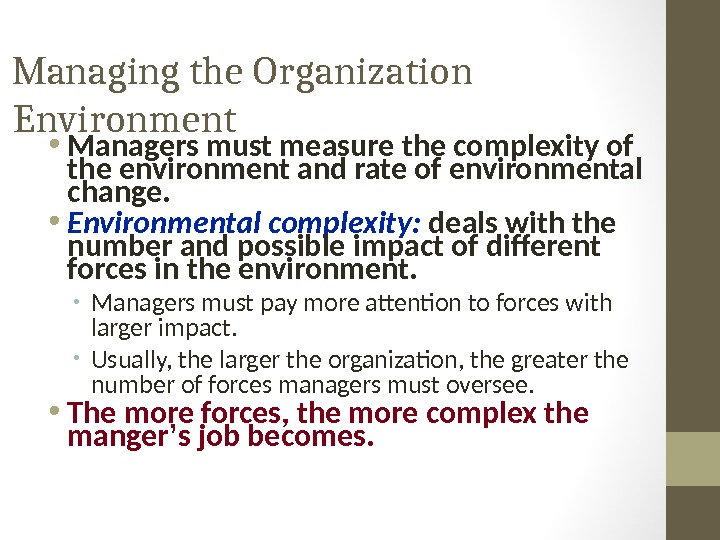

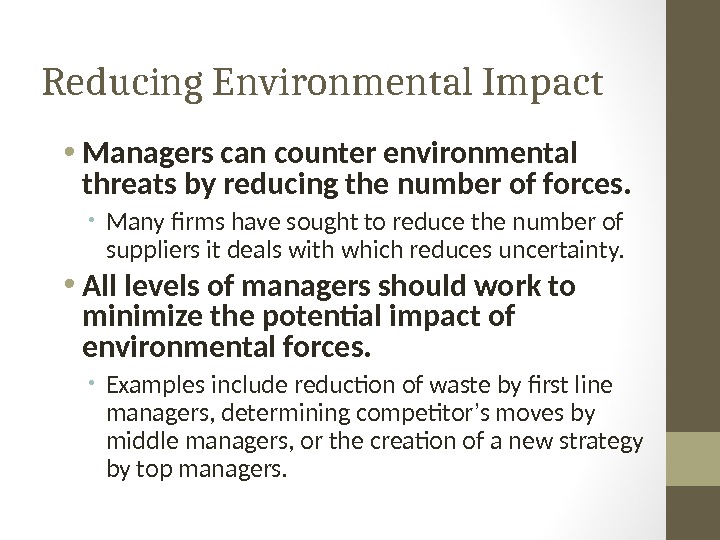
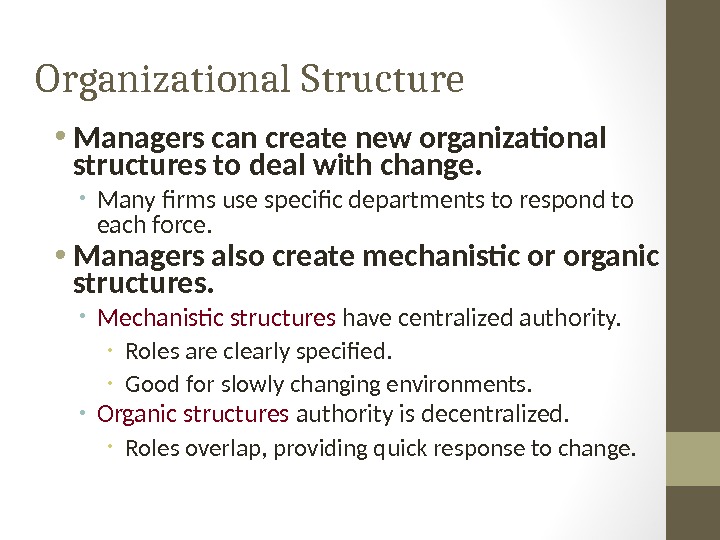

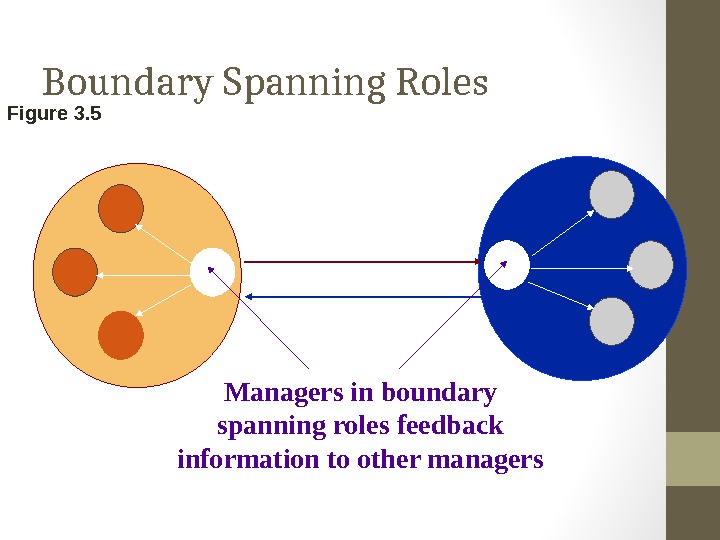
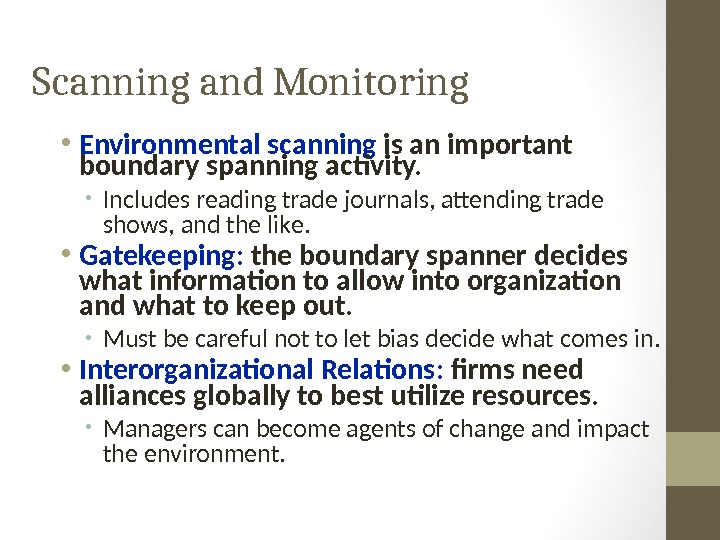
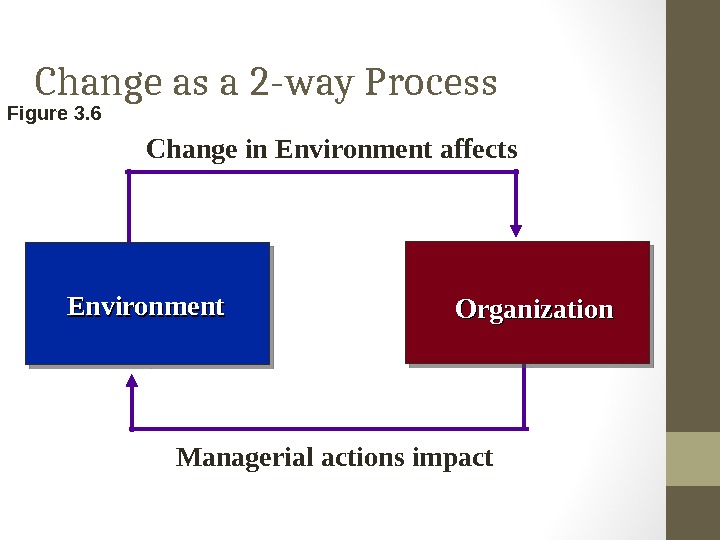
session2_organization_and_environment.ppt
- Размер: 472.5 Кб
- Количество слайдов: 26
Описание презентации Organizations and Organizational Environment 3 Types of по слайдам
 Organizations and Organizational Environment
Organizations and Organizational Environment
 Types of property • Property – any tangible or intangible entity, which is owned by a person, group of people, or a legal entity, such as corporation 2 generally accepted types of property: tangible and intangible Tangible – anything you can touch, real (or immovable) property + personal (moveable property). Factory and machinery in Korea, is a tangible property of GM Intangible – property that is owned and can be transferred to other entities, but has no physical substance. Engine and car design, patents – is an intangible property of GM
Types of property • Property – any tangible or intangible entity, which is owned by a person, group of people, or a legal entity, such as corporation 2 generally accepted types of property: tangible and intangible Tangible – anything you can touch, real (or immovable) property + personal (moveable property). Factory and machinery in Korea, is a tangible property of GM Intangible – property that is owned and can be transferred to other entities, but has no physical substance. Engine and car design, patents – is an intangible property of GM
 Companies – are property • Private business • A company that is owned by one or more individuals who share liability • Public business • A company, which is traded on the stock exchange • Governmentally owned business • A company, where major stakeholder is government
Companies – are property • Private business • A company that is owned by one or more individuals who share liability • Public business • A company, which is traded on the stock exchange • Governmentally owned business • A company, where major stakeholder is government
 Private business • A business that is owned by non-government organization or by a relatively small number of shareholders • Types of private businesses • Sole proprietorship • Partnership – managed by several partners • Corporation – managed by managers, appointed by the Board • Most of the time it’s LLC (limited liability company, or TOB in Ukraine) • Owners bear a limited liability, meaning they will share losses and profits on the degree, they establish in the founding documents
Private business • A business that is owned by non-government organization or by a relatively small number of shareholders • Types of private businesses • Sole proprietorship • Partnership – managed by several partners • Corporation – managed by managers, appointed by the Board • Most of the time it’s LLC (limited liability company, or TOB in Ukraine) • Owners bear a limited liability, meaning they will share losses and profits on the degree, they establish in the founding documents
 Public business (public company) • Limited liability company, that offers securities(shares, stocks) in the open market. • Any person can buy “a piece of ownership” through a stock exchange • Every person, that buys shares of the company bears no commercial liability, but has an opportunity to share profits via dividends, however not all companies pay dividends.
Public business (public company) • Limited liability company, that offers securities(shares, stocks) in the open market. • Any person can buy “a piece of ownership” through a stock exchange • Every person, that buys shares of the company bears no commercial liability, but has an opportunity to share profits via dividends, however not all companies pay dividends.
 Government business • An enterprise, where the majority of the ownership belongs to the government • Usually a natural monopoly like oil&gas, any natural resources or a sector of strategic interest (Naftogaz, Oblenergos, Ukrspetsexport) • Rarely consumer services business – in Ukraine – Ukrzaliznytsya, Oshchadbank; in US – Fannie Mae, Farmer Mac
Government business • An enterprise, where the majority of the ownership belongs to the government • Usually a natural monopoly like oil&gas, any natural resources or a sector of strategic interest (Naftogaz, Oblenergos, Ukrspetsexport) • Rarely consumer services business – in Ukraine – Ukrzaliznytsya, Oshchadbank; in US – Fannie Mae, Farmer Mac
 Organizational Environment • Organizational Environment: those forces outside its boundaries that can impact it. • Forces can change over time and are made up of Opportunities and Threats. • Opportunities: openings for managers to enhance revenues or open markets. • New technologies, new markets and ideas. • Threats: issues that can harm an organization. • economic recessions, oil shortages. • Managers must seek opportunities and avoid threats.
Organizational Environment • Organizational Environment: those forces outside its boundaries that can impact it. • Forces can change over time and are made up of Opportunities and Threats. • Opportunities: openings for managers to enhance revenues or open markets. • New technologies, new markets and ideas. • Threats: issues that can harm an organization. • economic recessions, oil shortages. • Managers must seek opportunities and avoid threats.
 Forces in the Organizational Environment Figure 3. 1 Distributors Firm Task Environment Suppliers Competitors Customers. General Environment Economic Forces Global Forces Sociocultural Forces Demographic Forces Technological Forces Political & Legal Forces
Forces in the Organizational Environment Figure 3. 1 Distributors Firm Task Environment Suppliers Competitors Customers. General Environment Economic Forces Global Forces Sociocultural Forces Demographic Forces Technological Forces Political & Legal Forces
 Task Environment • Task Environment : forces from suppliers, distributors, customers, and competitors. • Suppliers: provide organization with inputs • Managers need to secure reliable input sources. • Suppliers provide raw materials, components, and even labor. • Working with suppliers can be hard due to shortages, unions, and lack of substitutes. • Suppliers with scarce items can raise the price and are in a good bargaining position. • Managers often prefer to have many, similar suppliers of each item.
Task Environment • Task Environment : forces from suppliers, distributors, customers, and competitors. • Suppliers: provide organization with inputs • Managers need to secure reliable input sources. • Suppliers provide raw materials, components, and even labor. • Working with suppliers can be hard due to shortages, unions, and lack of substitutes. • Suppliers with scarce items can raise the price and are in a good bargaining position. • Managers often prefer to have many, similar suppliers of each item.
 Task Environment • Distributors : organizations that help others to sell goods. • Compaq Computer first used special computer stores to sell their computers but later sold through discount stores to reduce costs. • Some distributors like Wal-Mart have strong bargaining power. • They can threaten not to carry your product. • Customers : people who buy the goods. • Usually, there are several groups of customers. • For Compaq, there are business, home, & government buyers.
Task Environment • Distributors : organizations that help others to sell goods. • Compaq Computer first used special computer stores to sell their computers but later sold through discount stores to reduce costs. • Some distributors like Wal-Mart have strong bargaining power. • They can threaten not to carry your product. • Customers : people who buy the goods. • Usually, there are several groups of customers. • For Compaq, there are business, home, & government buyers.
 Task Environment • Competitors: other organizations that produce similar goods. • Rivalry between competitors is usually the most serious force facing managers. • High levels of rivalry often means lower prices. • Profits become hard to find. • Barriers to entry keep new competitors out and result from : • Economies of scale: cost advantages due to large scale production. • Brand loyalty: customers prefer a given product.
Task Environment • Competitors: other organizations that produce similar goods. • Rivalry between competitors is usually the most serious force facing managers. • High levels of rivalry often means lower prices. • Profits become hard to find. • Barriers to entry keep new competitors out and result from : • Economies of scale: cost advantages due to large scale production. • Brand loyalty: customers prefer a given product.
 Industry Life Cycle • Reflects the changes that take place in an industry over time. • Birth stage: firms seek to develop a winning technology. • VHS vs. Betamax in video, or 8 -track vs. cassette in audio. • Growth stage: Product gains customer acceptance and grows rapidly. • New firms enter industry, production improves, distributors emerge.
Industry Life Cycle • Reflects the changes that take place in an industry over time. • Birth stage: firms seek to develop a winning technology. • VHS vs. Betamax in video, or 8 -track vs. cassette in audio. • Growth stage: Product gains customer acceptance and grows rapidly. • New firms enter industry, production improves, distributors emerge.
 • Shakeout stage: at end of growth, there is a slowing customer demand. • Competitor rivalry increases, prices fall. • Least efficient firms fail and leave industry. • Maturity stage: most customers have bought the product, growth is slow. • Relationships between suppliers, distributors more stable. • Usually, industry dominated by a few, large firms. • Decline stage: falling demand for the product. • Prices fall, weaker firms leave the industry.
• Shakeout stage: at end of growth, there is a slowing customer demand. • Competitor rivalry increases, prices fall. • Least efficient firms fail and leave industry. • Maturity stage: most customers have bought the product, growth is slow. • Relationships between suppliers, distributors more stable. • Usually, industry dominated by a few, large firms. • Decline stage: falling demand for the product. • Prices fall, weaker firms leave the industry.
 The General Environment • Consists of the wide economic, technological, demographic and similar issues. • Managers usually cannot impact or control these. • Forces have profound impact on the firm. • Economic forces: affect the national economy and the organization. • Includes interest rate changes, unemployment rates, economic growth. • When there is a strong economy, people have more money to spend on goods and services.
The General Environment • Consists of the wide economic, technological, demographic and similar issues. • Managers usually cannot impact or control these. • Forces have profound impact on the firm. • Economic forces: affect the national economy and the organization. • Includes interest rate changes, unemployment rates, economic growth. • When there is a strong economy, people have more money to spend on goods and services.
 • Technological forces: skills & equipment used in design, production and distribution. • Result in new opportunities or threats to managers. • Often make products obsolete very quickly. • Can change how we manage. • Socialcultural forces: result from changes in the social or national culture of society. • Social structure refers to the relationships between people and groups. • Different societies have vastly different social structures. • National culture includes the values that characterize a society. • Values and norms differ widely throughout the world. • These forces differ between cultures and over time.
• Technological forces: skills & equipment used in design, production and distribution. • Result in new opportunities or threats to managers. • Often make products obsolete very quickly. • Can change how we manage. • Socialcultural forces: result from changes in the social or national culture of society. • Social structure refers to the relationships between people and groups. • Different societies have vastly different social structures. • National culture includes the values that characterize a society. • Values and norms differ widely throughout the world. • These forces differ between cultures and over time.
 The Industry Life Cycle Figure 3. 3 Birth Growth Shakeout Maturity Decline
The Industry Life Cycle Figure 3. 3 Birth Growth Shakeout Maturity Decline
 • Demographic forces: result from changes in the nature, composition and diversity of a population. • These include gender, age, ethnic origin, etc. • For example, during the past 20 years, women have entered the workforce in increasing numbers. • Currently, most industrial countries are aging. • This will change the opportunities for firms competing in these areas. • New demand for health care, assisting living can be forecast.
• Demographic forces: result from changes in the nature, composition and diversity of a population. • These include gender, age, ethnic origin, etc. • For example, during the past 20 years, women have entered the workforce in increasing numbers. • Currently, most industrial countries are aging. • This will change the opportunities for firms competing in these areas. • New demand for health care, assisting living can be forecast.
 • Political-legal forces: result from changes in the political arena. • These are often seen in the laws of a society. • Today, there is increasing deregulation of many state-run firms. • Global forces: result from changes in international relationships between countries. • Perhaps the most important is the increase in economic integration of countries. • Free-trade agreements (GATT, NAFTA, EU) decreases former barriers to trade. • Provide new opportunities and threats to managers.
• Political-legal forces: result from changes in the political arena. • These are often seen in the laws of a society. • Today, there is increasing deregulation of many state-run firms. • Global forces: result from changes in international relationships between countries. • Perhaps the most important is the increase in economic integration of countries. • Free-trade agreements (GATT, NAFTA, EU) decreases former barriers to trade. • Provide new opportunities and threats to managers.
 Managing the Organization Environment • Managers must measure the complexity of the environment and rate of environmental change. • Environmental complexity: deals with the number and possible impact of different forces in the environment. • Managers must pay more attention to forces with larger impact. • Usually, the larger the organization, the greater the number of forces managers must oversee. • The more forces, the more complex the manger ’ s job becomes.
Managing the Organization Environment • Managers must measure the complexity of the environment and rate of environmental change. • Environmental complexity: deals with the number and possible impact of different forces in the environment. • Managers must pay more attention to forces with larger impact. • Usually, the larger the organization, the greater the number of forces managers must oversee. • The more forces, the more complex the manger ’ s job becomes.
 • Environmental change: refers to the degree to which forms in the task and general environments change over time. • Change rates are hard to predict. • The outcomes of changes are even harder to identify. • Managers thus cannot be sure that actions taken today will be appropriate in the future given new changes.
• Environmental change: refers to the degree to which forms in the task and general environments change over time. • Change rates are hard to predict. • The outcomes of changes are even harder to identify. • Managers thus cannot be sure that actions taken today will be appropriate in the future given new changes.
 Reducing Environmental Impact • Managers can counter environmental threats by reducing the number of forces. • Many firms have sought to reduce the number of suppliers it deals with which reduces uncertainty. • All levels of managers should work to minimize the potential impact of environmental forces. • Examples include reduction of waste by first line managers, determining competitor ’ s moves by middle managers, or the creation of a new strategy by top managers.
Reducing Environmental Impact • Managers can counter environmental threats by reducing the number of forces. • Many firms have sought to reduce the number of suppliers it deals with which reduces uncertainty. • All levels of managers should work to minimize the potential impact of environmental forces. • Examples include reduction of waste by first line managers, determining competitor ’ s moves by middle managers, or the creation of a new strategy by top managers.
 Organizational Structure • Managers can create new organizational structures to deal with change. • Many firms use specific departments to respond to each force. • Managers also create mechanistic or organic structures. • Mechanistic structures have centralized authority. • Roles are clearly specified. • Good for slowly changing environments. • Organic structures authority is decentralized. • Roles overlap, providing quick response to change.
Organizational Structure • Managers can create new organizational structures to deal with change. • Many firms use specific departments to respond to each force. • Managers also create mechanistic or organic structures. • Mechanistic structures have centralized authority. • Roles are clearly specified. • Good for slowly changing environments. • Organic structures authority is decentralized. • Roles overlap, providing quick response to change.
 Boundary Spanning • Managers must gain access to information needed to forecast future issues. • Rod Canion ’ s forecast of Compaq ’ s future was wrong due to his incorrect view of the environment. • Boundary spanning is the practice of relating to people outside the organization. • Seek ways to respond and influence stakeholder perception. • By gaining information outside, managers can make better decisions about change. • More management levels involved in spanning, yields better overall decision making.
Boundary Spanning • Managers must gain access to information needed to forecast future issues. • Rod Canion ’ s forecast of Compaq ’ s future was wrong due to his incorrect view of the environment. • Boundary spanning is the practice of relating to people outside the organization. • Seek ways to respond and influence stakeholder perception. • By gaining information outside, managers can make better decisions about change. • More management levels involved in spanning, yields better overall decision making.
 Boundary Spanning Roles Figure 3. 5 Managers in boundary spanning roles feedback information to other managers
Boundary Spanning Roles Figure 3. 5 Managers in boundary spanning roles feedback information to other managers
 Scanning and Monitoring • Environmental scanning is an important boundary spanning activity. • Includes reading trade journals, attending trade shows, and the like. • Gatekeeping: the boundary spanner decides what information to allow into organization and what to keep out. • Must be careful not to let bias decide what comes in. • Interorganizational Relations: firms need alliances globally to best utilize resources. • Managers can become agents of change and impact the environment.
Scanning and Monitoring • Environmental scanning is an important boundary spanning activity. • Includes reading trade journals, attending trade shows, and the like. • Gatekeeping: the boundary spanner decides what information to allow into organization and what to keep out. • Must be careful not to let bias decide what comes in. • Interorganizational Relations: firms need alliances globally to best utilize resources. • Managers can become agents of change and impact the environment.
 Change as a 2 -way Process Environment Organization. Change in Environment affects Managerial actions impact. Figure 3.
Change as a 2 -way Process Environment Organization. Change in Environment affects Managerial actions impact. Figure 3.

